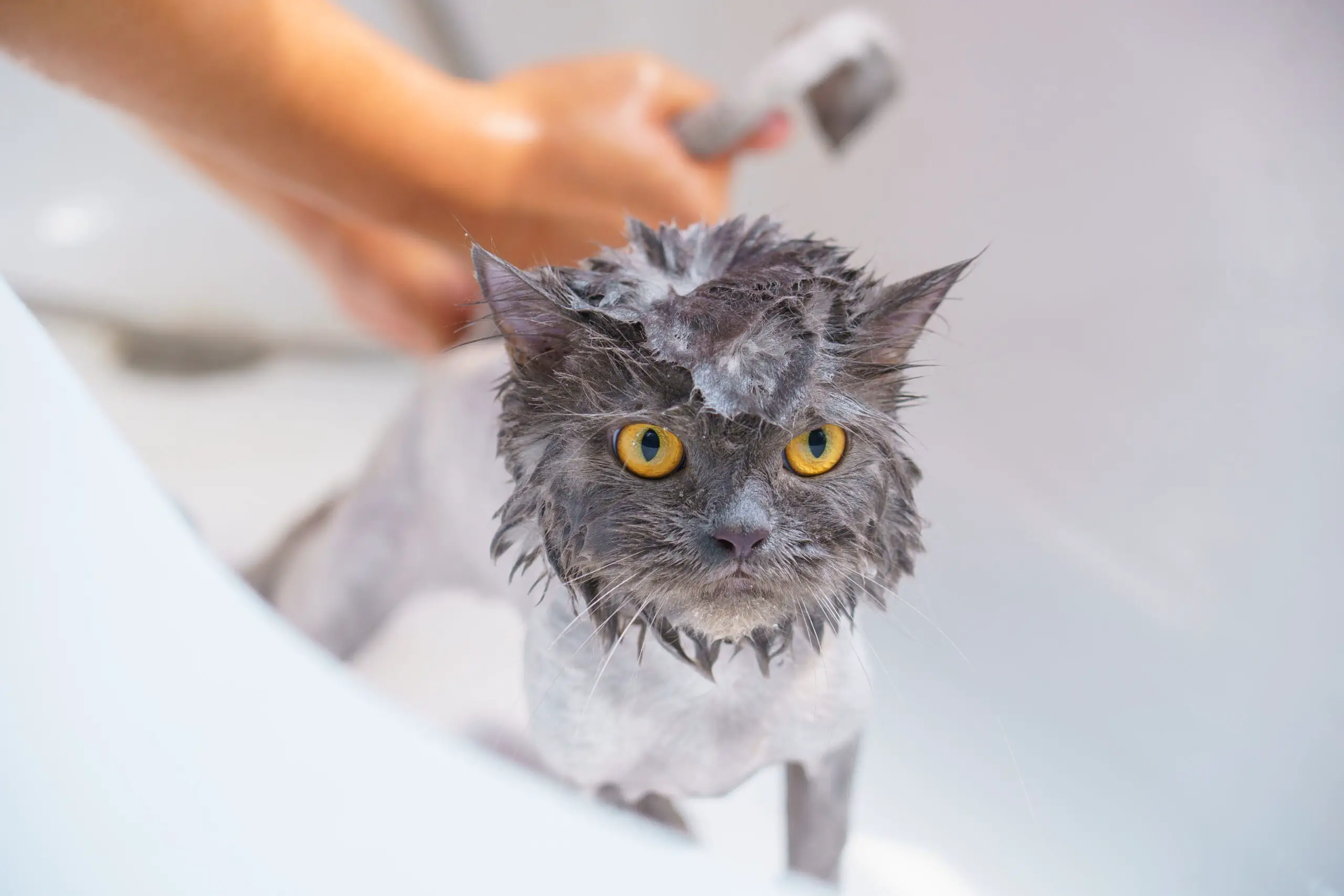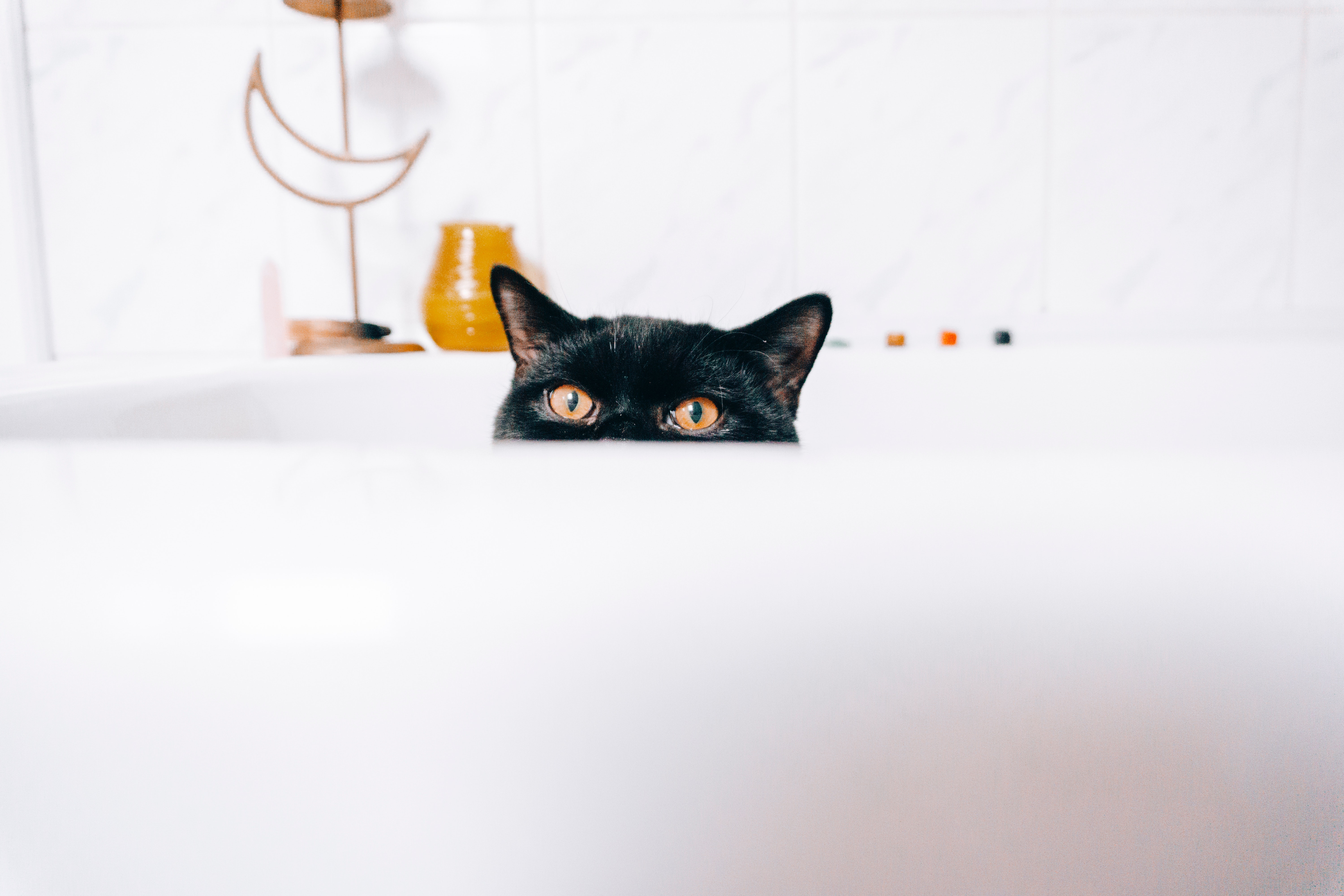Table of Contents
Are you a pet owner trying to figure out how to bathe a cat that hates water? It can be challenging, but it’s not impossible. With the right preparation and understanding of your cats’ fear of water, you’ll be able to safely and comfortably bath them without any stress or mess.
This article will help guide you through all the steps needed for bathing your cat – from understanding their fear of water, preparing for the bath itself, executing it successfully and aftercare tips for when they’re done.
So don’t worry if your feline friend isn’t too keen on getting wet – we’ve got everything covered! Bathing a cat that hates water may seem like an insurmountable task at first glance – but with our expert advice here today, there is hope yet!
Table of Contents:
- Understanding Your Cat’s Fear of Water
- Preparing for the Bath
- Bathing Your Cat Safely and Comfortably
- Aftercare Tips for Bathing Your Cat
- Conclusion
Understanding Your Cat’s Fear of Water
Signs of Fear in Cats: Cats can show fear in a variety of ways, such as hiding, trembling, and vocalizing. They may also exhibit physical signs like dilated pupils, flattened ears, or an arched back. If your cat is displaying any of these behaviors when they encounter water or the bathtub area it’s likely that they are scared.
Causes of Fear in Cats: There are many potential causes for a cat’s fear of water including genetics and past experiences. Some cats may have had negative experiences with water while others simply have an innate aversion to it due to their breed or genetic makeup.
It’s important to understand why your cat is afraid so you can help them overcome their fear safely and effectively.
The best way to help your cat overcome their fear is through desensitization and positive reinforcement techniques. Start by introducing them slowly to the bathroom environment before attempting any bathing activities.
You should then gradually introduce them to small amounts of water until they become comfortable with the sensation on their fur and skin before attempting a full-body bath session.
During this process, be sure to reward good behavior with treats or verbal praise so that your cat associates positive feelings with being around water instead of feeling scared or anxious about it
Preparing for the Bath
Gather Supplies and Prepare the Area: Before you begin bathing your cat, it is important to gather all necessary supplies. This includes a bathtub or sink large enough for your cat, a rubber mat to provide traction in the tub, a cup or pitcher for pouring water over your pet’s fur, shampoo specifically designed for cats, and towels.
Additionally, make sure that the area is warm and comfortable before beginning the bath.
Introduce Your Cat to the Bathroom: Once you have gathered all of your supplies and prepared the area, it’s time to introduce your cat to their new bathroom.
Allow them some time to explore their surroundings so they can become familiar with this space. You may also want to reward them with treats during this process as an additional incentive for being brave.
After introducing your cat to their new bathroom environment, start by desensitizing them slowly with water by using positive reinforcement techniques such as offering treats while lightly spraying water on their fur from a distance.
Gradually increase the proximity until they are comfortable having water poured directly onto them without fear or anxiety.
Bathing Your Cat Safely and Comfortably
When it comes to bathing your cat, the key is to make sure that they are comfortable throughout the process. Starting with a gentle massage can help your cat relax and get used to being handled in preparation for bath time.
Start by lightly petting them around their head and neck area, gradually working down their body. Make sure you use slow, soothing strokes as this will help them stay calm during the process.
Gradually introducing water is important when it comes to helping your cat become more comfortable with bath time. Start by wetting a washcloth or sponge and gently wiping it over their fur.
As they become more accustomed to this sensation, slowly increase the amount of water until you’re able to fully submerge them in the tub or sink if necessary. It’s important not to rush this step as cats may panic if overwhelmed too quickly with water.
Using positive reinforcement techniques can also be helpful when trying to get your cat used to bath time. Offer treats after each successful step of the process such as allowing themselves to be touched or getting into the tub without any fussing or fighting back.
This will create an association between bath time and something enjoyable, which should make future baths easier on both you and your furry friend.
Aftercare Tips for Bathing Your Cat
Clean Up After the Bath: It is important to clean up after a bath, as cats can be sensitive to any leftover residue from soaps or shampoos. Use warm water and a mild soap to thoroughly rinse away all traces of product. Make sure you also dry your cat off with a towel, paying special attention to their ears and paws.
Additionally, it’s best practice to change out the litter box after bathing your cat in order for them not associate negative feelings with using it.
Provide Comfort and Reassurance: After bathing your cat, provide comfort by giving them treats or cuddles. You can also offer verbal reassurance that everything is okay by speaking in soft tones while petting them gently.
If possible, try keeping another animal nearby such as another pet or even just an old toy they are familiar with that will help keep them calm during this time of transition post-bathtime.
Once you have finished cleaning up after the bath and providing comfort/reassurance for your cat, it is important to monitor their behavior over the next few days for signs of stress or discomfort such as excessive grooming, hiding more than usual, changes in appetite/sleep patterns etc.
If these behaviors persist beyond normal levels then consider consulting with a veterinarian who may be able to recommend additional steps on how best to care for your pet during this period of adjustment post-bathtime.
Conclusion
Bathing a cat that hates water can be a challenging task, but with the right preparation and technique it is possible to do so safely and comfortably. Understanding your cat’s fear of water, preparing for the bath, bathing them safely and comfortably, as well as providing aftercare are all important steps in successfully bathing a cat that hates water.
With patience and understanding you can help make this experience less stressful for both you and your pet.
Are you struggling to bathe your cat that hates water? Don’t worry, we have the solutions for you! Our pet website offers step-by-step guides and tips on how to properly give a bath to cats that are resistant.
We also provide advice from experts on dealing with difficult situations during the bathing process. With our help, your cat can enjoy its much needed bath without any stress or discomfort. Visit us now and get started today!

